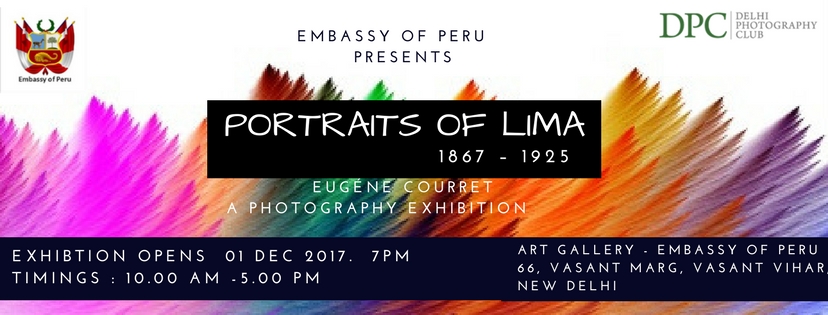Portraits of Lima (Photography Exhibition by Embassy of Peru )
Embassy of Peru in Collabration with Delhi Photography Club presents The Portraits of Lima (1867 – 1925) A Photography Exhibtion (All the photos are property of Archives of the National Library of Peru)
The Portraits of Lima (1867 – 1925) are a selection of photographs from the archives of Eugéne Courret, a remarkable photographer who was born in France in 1841, and decided to settle in Lima in 1860.
At that time, Lima, the capital of Peru, was one of the busiest cities in the Americas thanks to the bonanza produced by the exploitation of guano (fertilizer). It was a magnet for business travellers, artists, explorers and people from Europe who wanted to be a part of the life of “The Pearl of the Pacific”, a name given to the city, by the German naturalist Alexander Von Humboldt.
Courret, opened in 1863, his own photo studio named “Fotografia Central” in partnership with his brother Aquiles. Through the years, a big part of the Peruvian society was captured by the eyes of the Courret brothers, not only in the age of splendour but also during the dramatic years of the Pacific War (1879-1883). Entire families, babies, nannies, servants, immigrants, nuns, priest, authorities, army or navy officers and also Presidents of the Republic were portrayed by the lenses of Courret, accumulating an impressive collection of 1,57,800 glass negatives.
The photo studio Fotografia Central was awarded several prizes for its pictures and compositions not only in Peruvian contests but also in international competitions in Europe. For example in the year 1900 they were awarded with the Gold medal in the Universal Exposition held in Paris.
In 1887 Eugène Courret due to health issues left Lima and established a branch of this studio in Paris, where he continued to work until his death. Meanwhile his photo studio in Lima was managed by Adolphe Dubruil, an expert photographer and friend of Eugène Courret.
The studio in Lima remained open until 1935, after which it was forced to close due to the world economic crisis and the popularity of the automatic cameras.
This exhibition highlights the multiculturalism and diversity of the Peruvian Society in the early years of the Republic.


